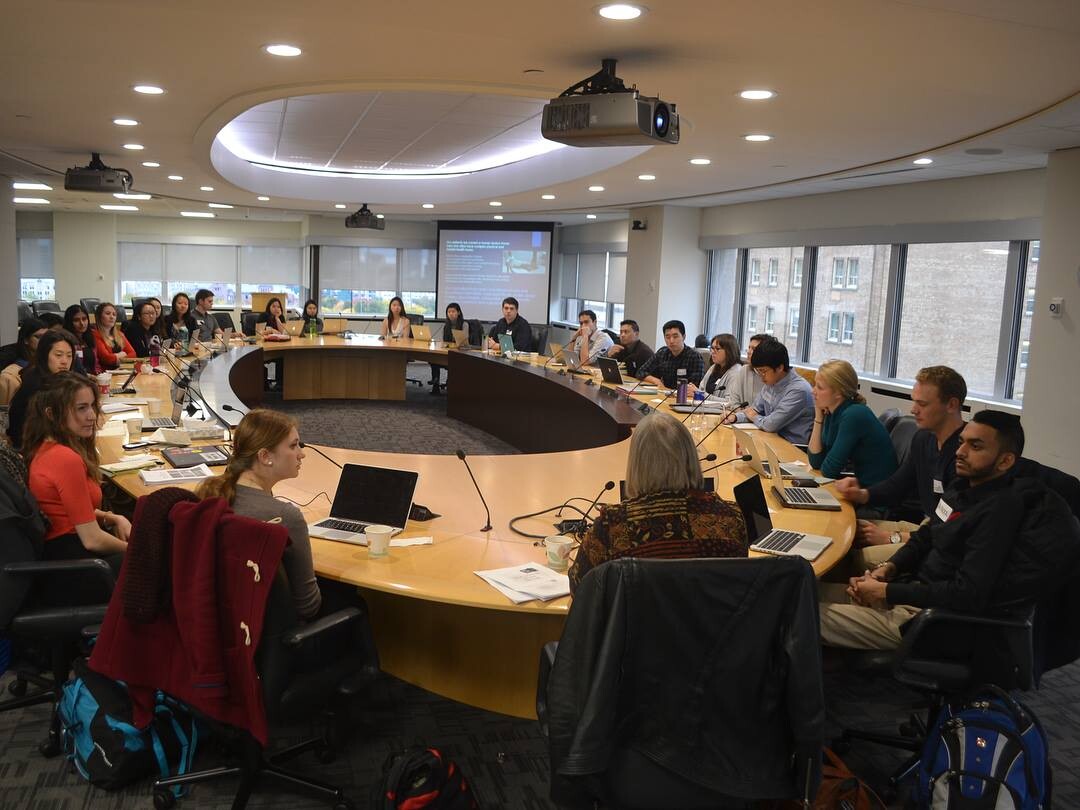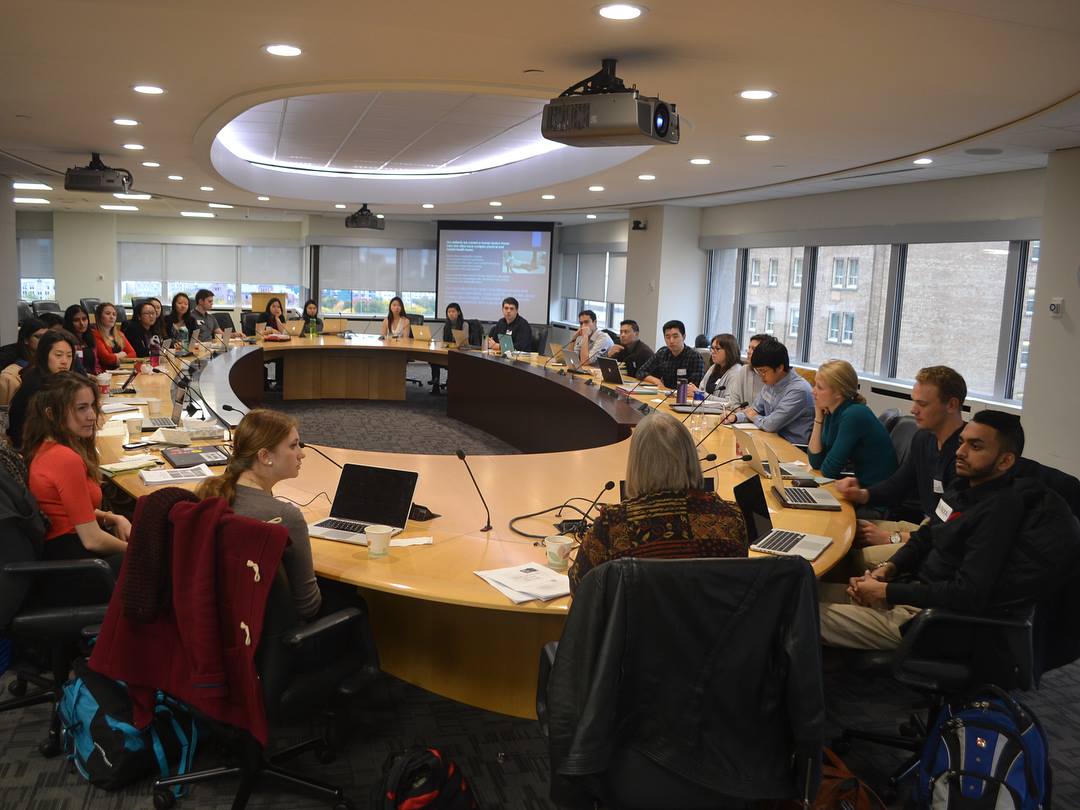Breadcrumbs
- Home
- MD/PhD Program
- News
- Medical Students Lobby City Council to Help the Homeless
Medical Students Lobby City Council to Help the Homeless

By Erin Howe
 They say you can’t fight city hall, so a group of first- and second-year medical students is joined them to present a homelessness advocacy initiative to members of council.
They say you can’t fight city hall, so a group of first- and second-year medical students is joined them to present a homelessness advocacy initiative to members of council.
More than 25 members of the classes of 2T0 and 2T1 met with 9 city councillors individually to raise the idea of a data management system they say would improve the way services that support homeless people are coordinated.
More than 5200 people in Toronto are homeless, according to the interim findings of the city’s most recent Street Needs Assessment 2013. For Patricia Hoyek, Inna Berditchevskaia and Kara Grace Hounsell, second-year MD students leading the initiative, the issue is close to home.
“We see people with no fixed address everyday on our way to school,” said Patricia Hoyeck, a second-year medical student. “When we shadow physicians, we witness the effects of the social determinants of health and inadequate housing. We have a role in advocating for things that can improve peoples’ health.”
The Ontario Medical Students Association and the Canadian Federation of Medical Students each organize an annual lobby day, but a group of medical students wanted to create something that would provide longer-term opportunities for engagement locally.
Although most of the meetings were held on a single day, the students began to consult with advocates, researchers and other community partners in the spring. The group says part of what makes the issue of homelessness so complex is the question of who funds the variety of supports needed. Hounsell points out that health and affordable housing are largely provincial issues, but shelters are funded municipally.
“These things are fragmented into different funding structures, but people’s experiences aren’t isolated that way. It’s difficult to work within these funding paradigms when they don’t capture the essence of the problem, allowing people to fall through the cracks.” says Hoyeck.
The students also say homeless people who have received treatment in hospitals are also being discharged back into homelessness. “There are people who aren’t sick enough to be living in the hospital, but they’re also not healthy enough to live on the street or in a shelter. So, when someone’s discharged from the hospital a shelter — whose responsibility is it to provide support to that person?” says Berditchevskaia.
The students proposed a system called the homeless management information system (HMIS), which is used in Calgary and many American cities. It’s a web-based system that helps people who work with the homeless population to better coordinate the services. For example, explains Hounsell, if a client’s information were accessible to multiple service providers, that could help with referrals and reveal which services they’ve accessed. And on a larger scale, there’s more opportunity for program evaluation, making it easier to see what’s working well and where resources need to be moved or added.
Joe Cressy, councillor for Ward 20, Trinity-Spadina and a member of the city’s Community Development and Recreation Committee — which addresses shelter — was one of the councillors who made time to speak with the students.
“Far too often, the only voices we hear at city hall are the same ones — it tends to be property owners who live near developments or proposed shelters. Rarely do we have younger voices come to the table. It’s the duty of everyone in this city to ensure we’re caring for the most vulnerable,” said Cressy. “These medical students have unique insight as physicians in training, which has brought a view point to the homelessness crisis in a series of proposals that, if adopted by council, would help.”
The students hope councillors will create a staff report on the feasibility of implementing the HMIS and plan to continue their efforts. They’re building information packages to share with councillors who ask for them and continuing to consult with community stakeholders about what their ideal system would look like.
“Humility in advocacy is also important,” says Hounsell. “We’re medical students who don’t work in this field, so this is a good opportunity for us to reflect on what we’re able to contribute — and when we need to ask others for their opinions and help as well.”
“We want this to be an ongoing conversation — advocacy doesn’t just happen on one day,” said Berditchevskaia. “We’re learning to use our voices to push for things that will better the health of our population. We have a responsibility to our future patents to help them individually, but also on a larger scale.”
News


